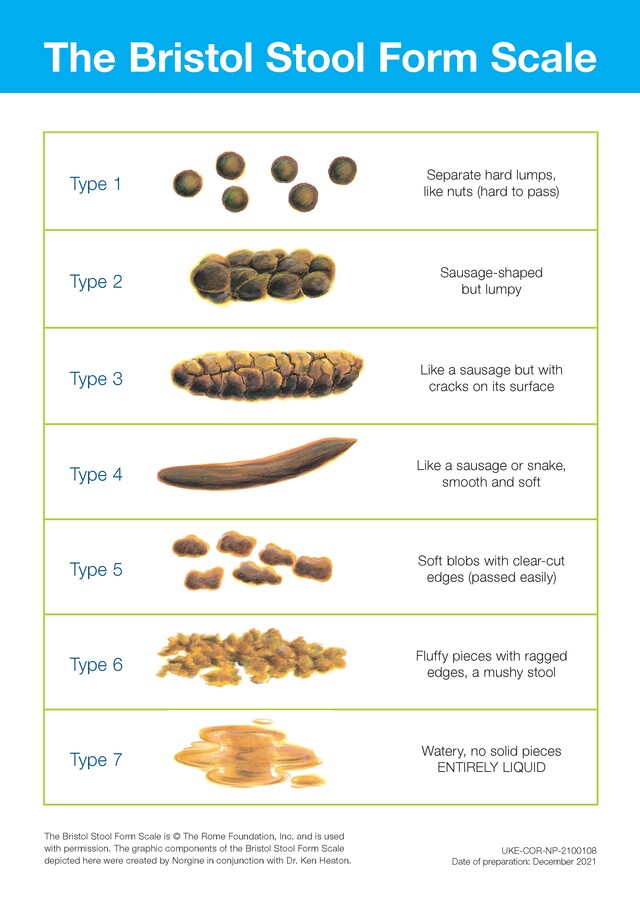(intro) Alex Lopes is a pelvic health physiotherapist, the director of Pelvic Health Melbourne in Altona North, and past national chair of the Australian Physiotherapy Association’s Women’s Men’s and Pelvic Health Group.
Gut health is a big conversation and getting more media airtime recently. So how common are gut based issues?
Around 24 per cent of all Australian experience constipation and many more experience incomplete emptying, straining, episodic diarrhea, haemorrhoids, fissures, smelly wind, excessive wiping and or gut pain.
So do you have a gut problem? To best answer this we first need to know what is normal.
What is normal?
( Insert table for gut health)
What should my stool (poo) look like? Check out the Bristol stool chart below to see if your stool is normal. Ideally should look like Teflon coated sausage smooth and slips out without any need to wipe. This in reality is rare and we can all relate to times where our stool has changed from type 1 all the way to type 7. As a general rule type 1 and 2 where you have hard pellets (like rabbit droppings) or hard
logs means you are constipated. Type 6 and 7 where your stool is sloppy is more diarrhea and type 3-5 is what most of us experience most of the time.
(Insert stool chart here)
So how do I manage constipation?
The general advice is drink plenty of fluids, eat a fibre rich diet and exercise but many of you will have tried these strategies, and you are still constipated, straining or experience incomplete emptying. For some of our patients they may be pushing incorrectly, or their anal canal is too tight. Yes, there is such a thing as a poo shute that is too tight.
Step one: Optimise your poo position and get your push mechanics right.
Leaning forwards with your heels on ground and your elbows on your knees helps straighten out the poo shute. If you need to push a little make sure you are pushing your belly out – not sucking it in. When we push our belly out we open the poo shute. When we suck the belly in we close the poo shute. Are you pushing through a closed or open shute? Not sure, try it on the toilet and check it out. Currently around 40 per cent of us are sucking in as we push – no wonder we have such issues with emptying.
Step two: Is your poo shute too tight?
A challenge for you – draw a very large circle on your hand as a reminder. Every time you see that circle on your hand bring your attention to your butt and the muscles around your butt and relax them – you will be amazed how often you are gripping there. Some of us are jaw grippers, some of us are shoulder grippers and yes some of us are indeed butt grippers. So let yours go and see how much easier it is to poo.
So how can I fix pasty poo?
Who knew so many people were bothered with this issue and it is so simple to fix. In most cases pasty poo is the biproduct of a very healthy fruit and veg diet. How do I know if I have pasty poo? Well you have to wipe more than four times and you often leave skiddies on the toilet bowel.
So how do we fix pasty poo? So simple. Increase fibre in your diet or speak to your pharmacist about a gentle bulking agent like benfibre or Metamucil. Natural options are chia seeds, leaving the skin on your carrots, potatoes and sweet potatoes. Hopefully these simple tricks help you.
The last poo based issue I would like to talk about it one which causes our clients and maybe you great distress and is sooo easy to fix. It’s called the post poo soiling. Do you find you have a little bit of leakage of poo within an hour of going to the toilet. This is usually because
you have pasty poo and instead of the ideal Teflon coated sausage you have the sticky peanut butter ot toothpaste going down the poo shite. It sticks to the sides and just with movement and body heat it oozes out in first hour after emptying. To fix this issue you just need to bulk up your stools a bit so the stool pops out the shute like that Teflon covered sausage with no residue rather than that annoying peanut butter that sticks to everything!
If you would like to chat further about issues or concerns you are having with your gut health, you can chat to your local pelvic health physiotherapist.








